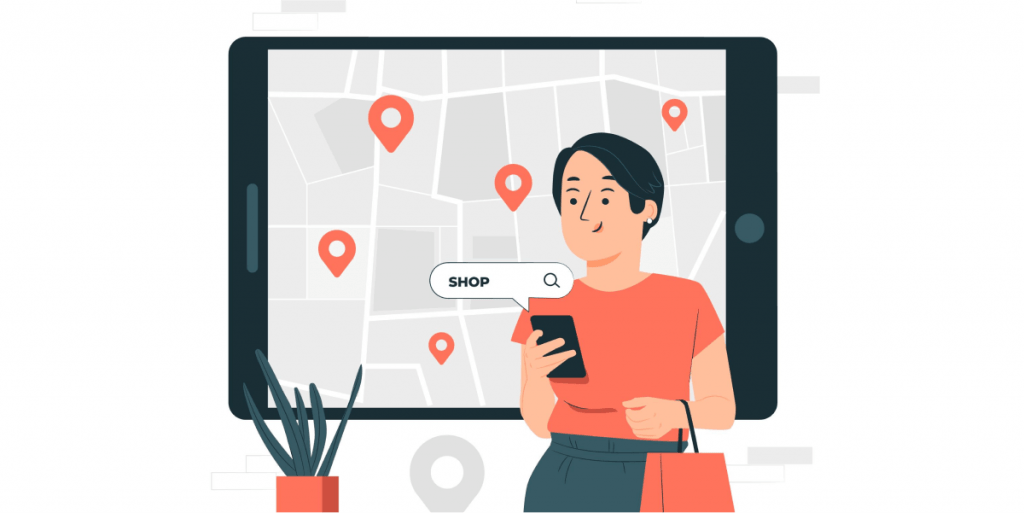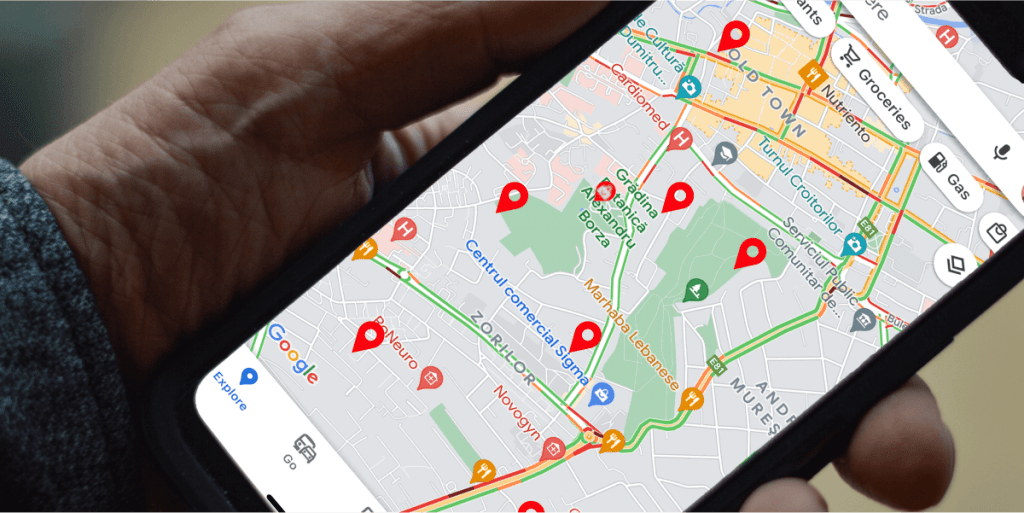Google Update To Local Search Results. What You Should Know and What To Do To Stay on Top
The world of digital marketing is constantly changing as Google is trying to better its services every day. Google rolls out algorithm updates to reward businesses that use white hat SEO techniques and try their best to implement best practices. Because of the competition, it becomes harder every day to rank high in the local search. This is why Google has updated its local algorithm to ensure that the returned results are the best match for the user’s intent behind a search query.
Between November 30th and December 8th 2021, Google has rolled out an update to local search. In this article, we will share more in-depth information about the changes and some advice on what to do to stay on top. Follow along for more.
What Is the Google Search Algorithm and How It Works?

Google’s mission is to organize all the indexed information and make it accessible and valuable worldwide. Over the years, search activity has changed, users are becoming more impatient, and they want the results to fit their search terms perfectly. Because of this, Google Search is continuously evolving and improving by mapping the web to return the most relevant and helpful information to online users.
There are 4.39 billion internet users, and almost 4 billion use Google Search as their primary search engine. They are looking for information, learn about topics of interest, potential customers will compare products and services, they will look for online reviews, etc. As technology evolves, Google updates its search algorithm to keep up with the trends and user demands.
The organic search results are based on multiple factors such as target keywords in user’s queries, the content on a website’s page, the trustworthiness of the source, user’s language and location. With the massive amount of websites on the internet, for search engines to return the most relevant searches, they have to sort through them. This is why they need to implement ranking signals and a system that can deliver a fast response. The ranking systems are based on a series of algorithms that incorporate the abovementioned factors. The importance of each factor depends on the queries characteristics. The freshest the content, the higher the chances of your website being displayed. More than that, your content’s relevancy and quality are among the top factors that determine how high your site will be displayed on the organic search results. The Google guidelines are stringent and well-defined because they strive to deliver the most relevant answers to a user’s search.
Google Confirms Update To Local Search Results – Local Search Ranking Changes

As our devices get constantly updated to perform better, the same thing happens with Google Search. These updates are done regularly to maximize the quality of results. Usually, these changes are not very noticeable, and they do not affect your online presence, but when a core ranking update is rolling out, that will have a massive impact.
Google has confirmed on December 16th 2021 that from November 30th to December 8th 2021, a local search update has been concluded. This update was implemented to rebalance various factors for generating the local search results. In the first week of December, business owners have started to see the November 2021 local search update changes. Sterling Sky named this local search update “Vicinity”.
This local search update is not the first one that rolled out and impacted the organic ranking. In 2016, Google released the Possum update, whose goal was to better filter the results in the Local Pack and Local Finder. If multiple businesses were operating in the same building and were similar in the nature of their products or services, they would be filtered out of the results. The Possum update made proximity a priority as a local ranking factor. Search engine optimization professionals noticed that the domain authority mattered less and less for the Local Pack and Local Finder rankings.
Around the time when the November 2021 local search ranking update was released, Google changed the design of the Local Pack. The new changes display three results on the left with the Google Maps on the right. The old design, since 2015, returned three results below the map. In early December, SEO specialists started to speculate that a major update would occur.
The changes in local traffic should be visible now. Professionals suppose that changes happen because of the algorithm update, but they can also be linked to the new design. Joy Hawkins, author at Search Engine Land says that the new Google algorithm seems to mostly affect the Local Pack and Google local search results (or the results that appear from the Google Maps).
Our advice is to check the queries you rank high in your Google Business Profile insights. The business dashboard will give you valuable information about how they appear in the desktop search.
Now let’s take a look at the ranking factors that matter for local search results:
- Relevancy – how well your local Business Profile matches the user query. By adding complete, detailed and accurate business information, Google will better understand your company and will match your profile to relevant searches.
- Proximity – how far the potential customer is from the location term used in the search bar. When a user does not specify a location in their search but they have the location permissions turned on, the results will be calculated based on the user’s location.
- Prominence – how much authority a business has and how well-known it is. Prominence is determined based on the information Google has about the company from all the web sources such as links, directories, articles and even details from a blog post, reviews count and review scores. All matters for the local ranking. Your position in the search results is also a ranking factor, therefore search engine optimization (SEO) efforts and best practices count for local search.

We did not know which local search factor is more relevant as a ranking factor, as Google never clearly mentioned this. If you were working to have your local business listing on point, now it’s time to reconsider the other factors as well. The November search algorithm update has shaken up the local rankings.
Now let’s see what the Vicinity update is all about. The name comes from the primary ranking factor for local search – proximity. This will make the results more relevant for users. Businesses will benefit and rank better than the competitors that are further away. Sterling Sky has found that adding keywords into your Google Business Profile listing is no longer a potential advantage. The data shows that businesses that use a keyword in business title that is not accurate to the business profile have seen a massive drop in search rankings. We strongly recommend following Google’s guidelines on local search engine optimization even if it takes longer for you to go up in the rankings.
Brightlocal has tested the search volatility during the rollout of the November 2021 update. The search volatility has reached 6.2 out of 10, and fluctuations could be observed across a broad range of industries. When the volatility stopped, businesses closer to the user location had seen an increase in their rankings.
Our Tips – What You Should Know and What To Do To Stay on Top

First of all, panicking is not an option. As long as you use white hat SEO techniques, you will not be affected by any core update. Google said that the guidance for the Vicinity update remains the same, along with their guidelines on local SEO best practices. The guidelines point out that the local algorithm returns results based on relevance, prominence and proximity as usual. More than that, to boost your website’s visibility Google advises local businesses to complete their data, verify locations, ensure the presence of NAP citations, manage and respond to customer reviews and add photos to their listings. Local companies must adapt to Google’s continuous algorithm development and comply with the guidelines to achieve constant and sustainable success.
Now that you know how the local search algorithm works and Google’s recommendations, we would like to share our recommendations that respect SEO best practices and ensure that no core algorithm update will affect you.
When someone is looking online for a company or a place near their current location, they will get results across Google Search or search features such as Maps. So, for your company to be featured, you should do the following:
- Complete Google Business Profile. Update your information such as business description, NAP citations (company’s name, the address of your physical location, phone number), website address, business category (industry/what types of services are you offering), open hours, special hours for events and holidays. If your company has multiple physical locations, you should create a GMB profile for each location. Read our step-by-step guide on how to add more locations to your business profile.
- Add photos to your GMB listing. Accurate and high-quality photos of your business, products or services will tell your company’s story and show customers that you have what they are searching for. Read our guide on how to add photos to your GMB listing.
- Manage and answer reviews. You should know that you cannot delete reviews from your GMB profile, and our advice is to post your answers to your clients even if they leave a negative review. In case of fake reviews, you can flag them, and Google will take care of the rest, as you cannot delete them. Review diversity and high-quality reviews show the search engine that your business is authentic and, therefore, you can grow your local rankings. More than that, it will encourage potential customers to visit your physical store.
- Verify your location. When you create your GMB profile, we strongly recommend verifying your location. Do fill out the citations with your company’s precise location.
- Make sure your website is optimized for mobile search. Google has a mobile-first index best practice. If your website is not mobile-friendly, you will lose your target audience, as you cannot reach everyone and lose on Google’s search services such as Google Maps, location history, etc.
- Avoid duplicate listings. Duplicate listings will affect your ranking performance in the Local Pack. We strongly advise you to remove all inaccurate listings to avoid being penalized by Google.
- Always have relevant content on your web pages. Relevant content will help you with the discovery searches and help you with your overall ranking results. Make sure your content is relevant to your goods and company. More than that, ensure that your links work properly. Focus on including relevant links, fixing the broken links, using internal links, etc. You can even implement a link building strategy and focus on attracting inbound links.
- Have a content strategy in place. Over the years, the quality of content has proved repeatedly that it can save or drown a business after a Google Core Update. Content is one of the most powerful search signals. Do not ignore your meta descriptions and meta titles when building your strategy.
In conclusion, focusing only on optimizing the business signals for local search will not bring you long term and consistently high rankings. We strongly advise you to pay attention to link signals, social signals (Google engagement, social media engagement), citation signals, citation volume, content quality, page speed, mobile-friendliness, etc.
Having a growing and successful business is not easy. If you are looking for a partner to help you with digital marketing and a rock-solid SEO strategy, look no further. We can help you reach and maintain a healthy Google ranking using only white-hat SEO techniques and respecting all Google’s best practices. Check out our blog to learn more about SEO and marketing, take a look at our case studies where we prove our expertise and read the reviews from our previous and current partners. Contact us today, and let’s skyrocket your business.
Frequently Asked Questions
No. Only the businesses that do not follow Google’s guidelines and best practices are penalized.
Google updates its algorithm constantly, but 2-3 times a year, they roll out core updates that significantly impact businesses.
Focus on optimizing your Google Business Profile following all Google guidelines and best practices for maximized results.
The proximity of address to the user’s search area, physical address in user’s city of search and the correct GMB category association.